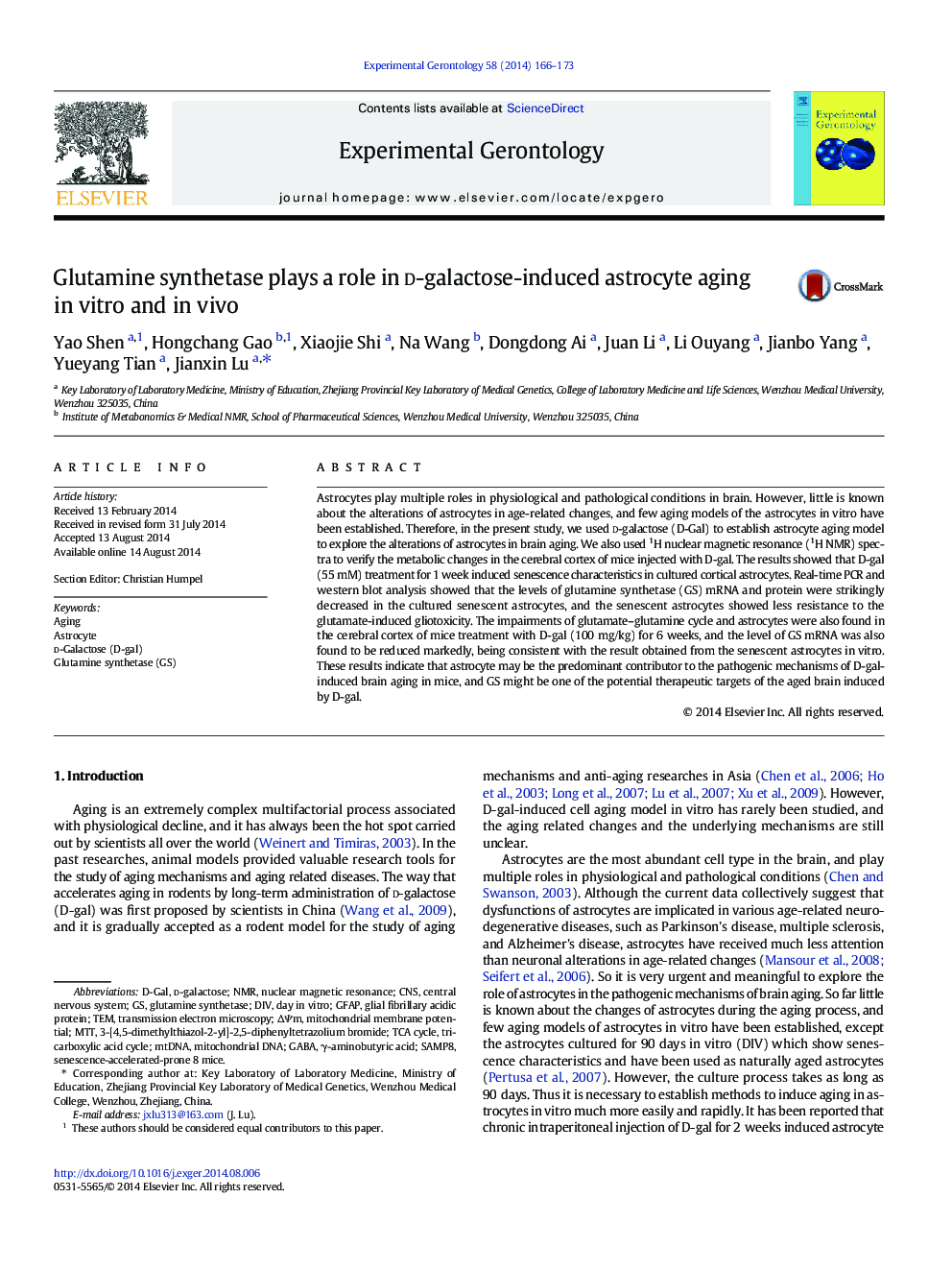| Article ID | Journal | Published Year | Pages | File Type |
|---|---|---|---|---|
| 1906272 | Experimental Gerontology | 2014 | 8 Pages |
•D-gal exposure induces senescence characteristics in cultured astrocytes.•Impairment of astrocytes is involved in D-gal-induced brain aging in mice.•The levels of GS mRNA and protein are decreased in the aging astrocytes.•Senescent astrocytes are less resistant to gliotoxicity induced by glutamate.
Astrocytes play multiple roles in physiological and pathological conditions in brain. However, little is known about the alterations of astrocytes in age-related changes, and few aging models of the astrocytes in vitro have been established. Therefore, in the present study, we used d-galactose (D-Gal) to establish astrocyte aging model to explore the alterations of astrocytes in brain aging. We also used 1H nuclear magnetic resonance (1H NMR) spectra to verify the metabolic changes in the cerebral cortex of mice injected with D-gal. The results showed that D-gal (55 mM) treatment for 1 week induced senescence characteristics in cultured cortical astrocytes. Real-time PCR and western blot analysis showed that the levels of glutamine synthetase (GS) mRNA and protein were strikingly decreased in the cultured senescent astrocytes, and the senescent astrocytes showed less resistance to the glutamate-induced gliotoxicity. The impairments of glutamate–glutamine cycle and astrocytes were also found in the cerebral cortex of mice treatment with D-gal (100 mg/kg) for 6 weeks, and the level of GS mRNA was also found to be reduced markedly, being consistent with the result obtained from the senescent astrocytes in vitro. These results indicate that astrocyte may be the predominant contributor to the pathogenic mechanisms of D-gal-induced brain aging in mice, and GS might be one of the potential therapeutic targets of the aged brain induced by D-gal.
